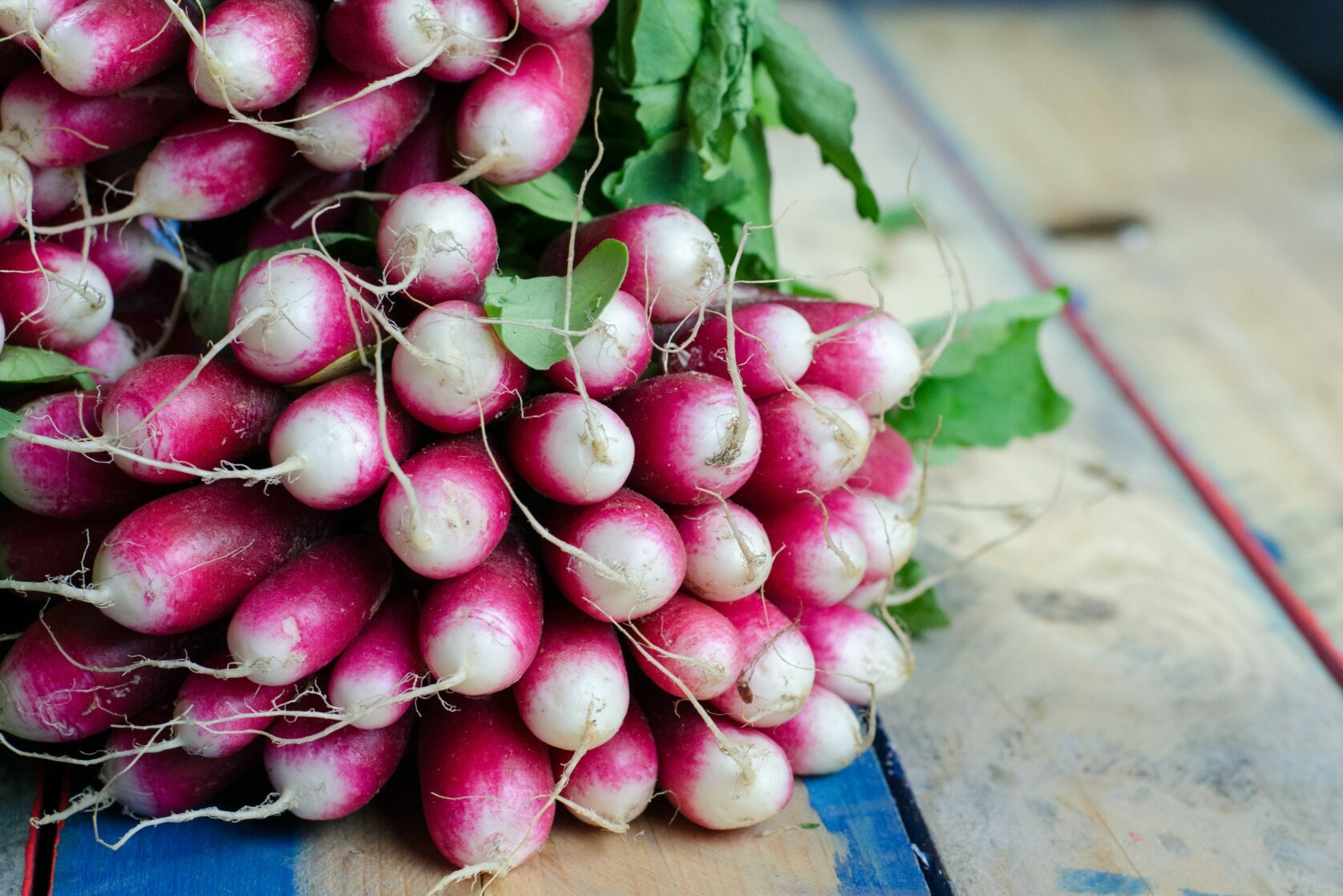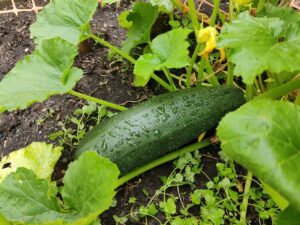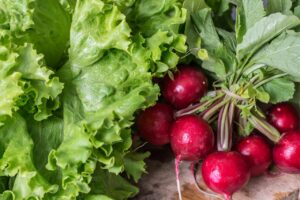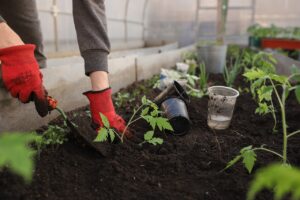Growing Radishes: A Step-by-Step Guide
Radishes are fast-growing and easy-to-grow vegetables that can be grown in almost any garden. With their crisp, peppery taste and bright colour, radishes are a popular addition to salads, sandwiches, and vegetable trays. If you’re looking to grow your radishes, here’s a step-by-step guide on growing radishes from seed.
How to Grow Radishes
Choose the Right Variety
There are many different varieties of radishes, each with its unique flavour, colour, and size. Some popular varieties include Cherry Belle, French Breakfast, Easter Egg, and Watermelon. When choosing your radish seeds, consider the following factors:
- Size: Radishes come in various sizes, from small, round globes to long, thin roots. Choose a size that suits your needs and preferences.
- Colour: Radishes can be white, pink, red, or even black. Choose a colour that appeals to you and fits well with your garden design.
- Flavour: Radishes can be mild or spicy, so choose a variety that matches your taste preferences.
Popular Radish Varieties
- Cherry Belle radishes: A popular variety of radish that is easy to grow and produces bright red, round roots that are about 1 inch in diameter. They are known for their crisp, juicy texture and mild, slightly sweet flavour with a hint of spiciness. Cherry Belle radishes are best grown in cool weather, making them a great choice for early spring or fall gardens. They mature quickly, typically in 22-30 days.
- French Breakfast radishes: Another popular variety of radishes that originated in France. They are known for their long, slender shape, with bright red skin and a white tip. French Breakfast radishes have a crisp, crunchy texture and a mildly spicy flavour with a slightly sweet undertone. They are typically harvested when they are about 3-4 inches long and are best eaten fresh, either raw as a snack or sliced thinly and added to salads or sandwiches. French Breakfast radishes are a cool-season crop and are best grown in early spring or fall when the weather is cooler. They are a fast-growing crop, typically maturing in just 21-28 days.
How to Plant Radishes
Planting radishes is a simple process that can be done in a variety of ways. Here are the steps to follow when planting radishes:
- Choose a sunny spot: Radishes need full sun to grow properly. Choose a spot in your garden that gets at least 6 hours of sunlight daily.
- Prepare the soil: Radishes prefer loose, well-draining soil that is rich in organic matter. Work the soil to a depth of at least 6 inches and remove any rocks, roots, or other debris.
- Plant the seeds: Plant the radish seeds directly into the soil about 1/2 inch deep and 1 inch apart. Cover the seeds with soil and water well.
- Thin the seedlings: When the radish seedlings reach about 2 inches in height, thin them out so that they are spaced about 2 inches apart. This will allow the radishes to grow properly.
- Water regularly: Radishes need regular watering to grow properly. Water the plants deeply once a week or more frequently during hot, dry weather.
By following these steps on how to plant radishes, you can ensure that your radishes grow properly and produce a bountiful harvest. Remember to keep the soil loose and well-draining, thin the seedlings, and water regularly. With a little bit of care and attention, you can enjoy fresh and tasty radishes from your garden all season long!
Fertilizing Radishes
Radishes do not require much fertilizer to grow properly, but a little nutrition can help them thrive. Here are some tips on how to fertilize your radishes:
- Use a balanced fertilizer: A balanced fertilizer with equal amounts of nitrogen, phosphorus, and potassium can help your radishes grow strong and healthy.
- Apply fertilizer sparingly: Radishes do not require a lot of fertilizer, so it’s important to apply it sparingly. Too much fertilizer can cause the roots to become tough and bitter.
- Apply fertilizer at the right time: Fertilizer should be applied when the radish seedlings have grown to about 2 inches in height. Apply the fertilizer according to the package instructions.
By following these tips on how to fertilize your radishes, you can give them the nutrition they need to grow strong and healthy. Remember to use a balanced fertilizer, apply it sparingly, and apply it at the right time. With a little bit of care and attention, you can enjoy a bountiful harvest of fresh and tasty radishes from your garden.
Harvesting and Storing Radishes
Harvesting radishes is a simple process that can be done when the radishes have reached maturity. Here are some tips on how to harvest and store your radishes:
- Check for maturity: Radishes are ready to harvest when they have reached their mature size. This can vary depending on the variety, but most radishes will be ready to harvest within 3-4 weeks of planting.
- Gently pull from the soil: To harvest radishes, gently pull them from the soil. If the radish is resistant, use a small garden trowel to loosen the soil around the base of the plant.
- Trim the tops: Once you have harvested your radishes, trim off the tops and any roots. This will help them stay fresh for longer.
- Store in the refrigerator: Radishes can be stored in the refrigerator for up to 1 week. Place them in a plastic bag or container with a damp paper towel to keep them fresh.
By following these tips on harvesting and storing radishes, you can enjoy your harvest for longer. Remember to check for maturity before harvesting, trim the tops, and store them in the refrigerator. With a little bit of care and attention, you can enjoy fresh and tasty radishes from your garden all season long!
Pests and Diseases
Radishes are relatively resistant to pests and diseases but can be affected by flea beetles, aphids, and root maggots. Control these pests by using insecticidal soap or neem oil, or by introducing natural predators such as ladybugs or lacewings. Radishes can also be affected by fungal diseases such as powdery mildew and downy mildew. To prevent these diseases, avoid overhead watering and make sure the plants have good air circulation.
Save Your Seeds
If you’re interested in saving your radish seeds for next year’s garden, choosing non-hybrid varieties is important, as hybrids will not produce true-to-type seeds. Allow your radishes to bolt (produce flowers and seed pods) and wait until the seed pods dry and turn brown. Harvest the pods and allow them to dry completely, then remove the seeds and store them in a cool, dry place.
Radish Companion Plants
Here are some of the best companions for radishes in the garden:
- Carrots: Radishes can help break up soil and improve drainage, which can result in bigger and more uniform carrots. Carrots can also help shade the soil and prevent it from drying out, which can benefit the radishes.
- Lettuce and spinach: Radishes can provide shade and keep the soil cool, which can prevent lettuce and spinach from bolting prematurely. Lettuce and spinach can also benefit from the nutrients and organic matter that radishes add to the soil.
- Peas: Radishes can help loosen the soil and improve aeration, benefiting pea roots and increasing their yield. Peas also produce nitrogen, which can benefit the radishes and other plants in the area.
- Bush Beans: Radishes can help deter bean beetles and other pests that can damage bean plants. Beans can also benefit from the nutrients that radishes add to the soil.
- Herbs: Radishes can be planted with a variety of herbs, such as dill, chives, and parsley. Herbs can help repel pests and attract beneficial insects, such as pollinators and predators of pests.
Companion planting radishes can offer many benefits for both the radishes and their companions in the garden. Radishes can help improve soil health, deter pests, and promote growth and yield for other plants. By choosing the right companions, planting radishes early, interplanting, and harvesting promptly, you can create a productive and diverse, beautiful and functional garden. So, consider adding radishes to your garden this season and enjoy their many benefits!
Plants to Avoid
Some plants may not be compatible with radishes, affecting their growth and productivity. Here are some plants to avoid planting near radishes:
- Brassicas: Radishes are a member of the Brassicaceae family, which includes plants like broccoli, cauliflower, and cabbage. These plants are not recommended for planting near radishes as they may attract the same pests and diseases and can also compete with the radishes for nutrients.
- Peppers: Peppers are also not recommended for planting near radishes. This is because they may attract flea beetles, which can also damage radishes.
- Pole beans: Pole beans are not recommended for planting near radishes as they can twine around the radish plants and cause damage.
- Other root vegetables: Other root vegetables like carrots and beets are not recommended for planting near radishes as they may compete for space and nutrients.
- Fennel: Fennel is known to inhibit the growth of some plants, including radishes. Therefore, it’s best to avoid planting fennel near radishes.
By avoiding planting these plants near your radishes, you can help ensure that your radish crop grows healthy and productive.
Tips for Growing Great Radishes
- Plant your radishes in early spring or fall when the weather is cool and moist.
- Keep your soil consistently moist, but avoid over-watering.
- Thin your seedlings to prevent overcrowding and ensure good root development.
- Control pests and diseases with natural or organic methods rather than chemical pesticides.
- Harvest your radishes promptly to ensure the best flavour and texture.
Conclusion
Mastering how to grow radishes and how to plant radishes is an easy and rewarding experience. By following our guide on how to grow radishes and companion planting with radish companion plants, you can enjoy a bountiful harvest of fresh and tasty radishes in your garden. So get started on growing your radishes today and enjoy the many benefits they offer!




